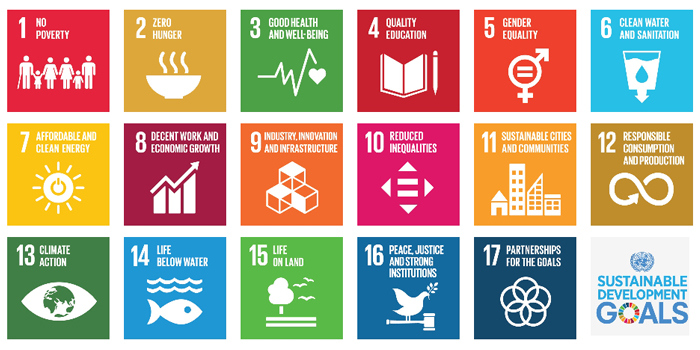Next week the UN Annual Forum on Science, Technology and Innovation for the Sustainable Development Goals (SDGs) will discuss the science required for “transformation towards sustainable and resilient societies”. Discussions will focus on SDGs 6 (water and sanitation), 7 (energy), 11 (sustainable cities), 12 (responsible consumption and production) and 15 (life on land).
This forum will bring together member states, civil society, the private sector, the scientific community, and United Nations entities. It aims to facilitate interactions, networks and partnerships to identify and examine needs and gaps in technologies, scientific cooperation, innovation and capacity-building to support the SDGs. We believe it is critical that the global geoscience community is represented, and will therefore attend and ensure a clear voice for geoscience at the heart of global development decision-making.
 The natural environment is a key pillar of sustainable development. Research, innovation and improved communication and use of geological science (or ‘geoscience’) is therefore essential to delivering sustainable and resilient societies. For example,
The natural environment is a key pillar of sustainable development. Research, innovation and improved communication and use of geological science (or ‘geoscience’) is therefore essential to delivering sustainable and resilient societies. For example,
- Mapping and Understanding the Sub-Surface. In a sustainable and resilient society, interactions between the surface and sub-surface are understood and integrated into urban planning to ensure that development is safe, hazards are mitigated against, and environmental impact is minimised. Geological maps, geophysical surveys, and the integration of geoscience data to develop ground models can generate an understanding of the sub-surface and support effective urban planning.
- Resource Management. In a sustainable and resilient society, everyone has sufficient and reliable access to energy, clean water, and the materials required for sustainable, resilient cities. This requires the identification and careful management of natural resources, including water, minerals, and building aggregates. The transition to renewable energies, such as solar panels and wind turbines, and electric transport will require a wide range of minerals, such as cadmium, lithium, molybdenum, selenium, and tellurium, as well as rare earth elements.
- Waste Management. In a sustainable and resilient society, less pollutants are generated, and those that are generated are better managed to reduce the environmental impact of society. Pollutants can take many forms, and these can impact both the surface and sub-surface. For example, while mining may be necessary to supply the materials needed for green technologies, this can generate large amounts of waste which needs to be managed carefully to avoid chemicals leaching into groundwater.
- Reducing Disaster Risk. In a sustainable and resilient society, the focus is on reducing risk (and preventing disasters), rather than accepting or increasing risk (and responding to disasters). Resilient communities, water supplies, energy infrastructure, and terrestrial ecosystems require effective disaster risk reduction. Research on the processes and potential impacts of earthquakes, volcanic eruptions, tsunamis, landslides, subsidence, and other geological hazards can help stakeholders to understand and reduce risk.
Sustainable and resilient societies, therefore, depend on access to geoscience information and the expertise to interpret this, as well as meaningful engagement by the geoscience community. The networks and partnerships being developed at the UN next week, to identify how scientific cooperation and innovation can support the SDGs, need to include geoscientists working across a broad array of specialisms.
Since the SDGs were agreed in 2015, we have been at the forefront of mobilising and equipping the geological science community to engage and help deliver this vision. We are proud to continue our international leadership on this topic, and will be a champion of the geosciences next week at the UN Headquarters.
Follow updates on Twitter – #GfGDatUNHQ
Read more about this event: https://sustainabledevelopment.un.org/content/documents/18157Forum_Concept_Note_April_26_draft.pdf
Read more about Geology and the Sustainable Development Goals: http://www.episodes.org/view/1835
